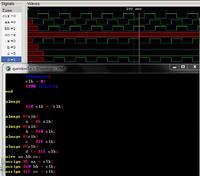onion2014
Member level 1

- Joined
- Mar 25, 2013
- Messages
- 35
- Helped
- 0
- Reputation
- 0
- Reaction score
- 0
- Trophy points
- 1,286
- Location
- NY
- Activity points
- 1,574
What is the difference between the following lines of code ?
reg1<= #10 reg2 ;
reg3 = # 10 reg4 ;
can anyone explain the difference, from the view of verilog event queue? Thanks.
reg1<= #10 reg2 ;
reg3 = # 10 reg4 ;
can anyone explain the difference, from the view of verilog event queue? Thanks.

